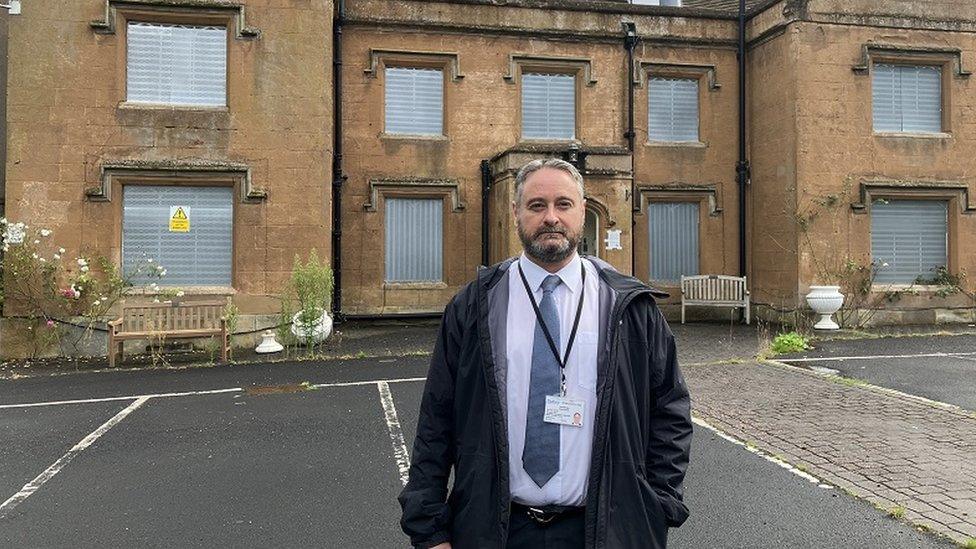Crucifix belonging to priest linked to Gunpowder Plot to go on display
- Published
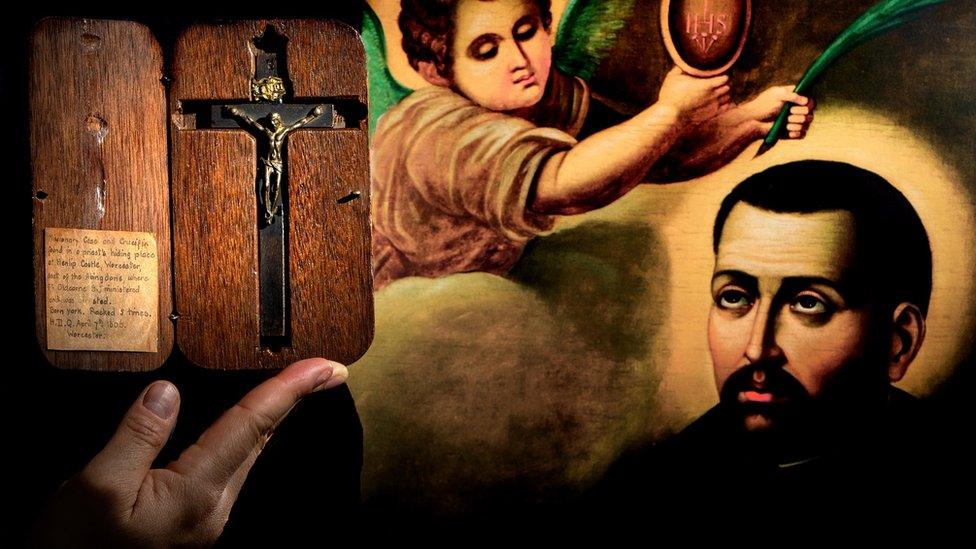
Father Edward Oldcorne, who was beatified in 1929 by the Catholic church
A crucifix belonging to a priest who was linked to the Gunpowder Plot is to go on display in York.
Father Edward Oldcorne was friends with Guy Fawkes and other plotters at the city's St Peter's School.
He was arrested after the failed attempt to blow up Parliament and kill Protestant King James I in 1605.
Oldcorne was not involved in the plot but was hanged, drawn and quartered in Worcester in 1606 for the then treasonous act of being a priest.
Thousands of objects were seized during raids on Catholic houses following the discovery of the plot, but the crucifix is the only known item to have survived, according to York's Bar Convent.
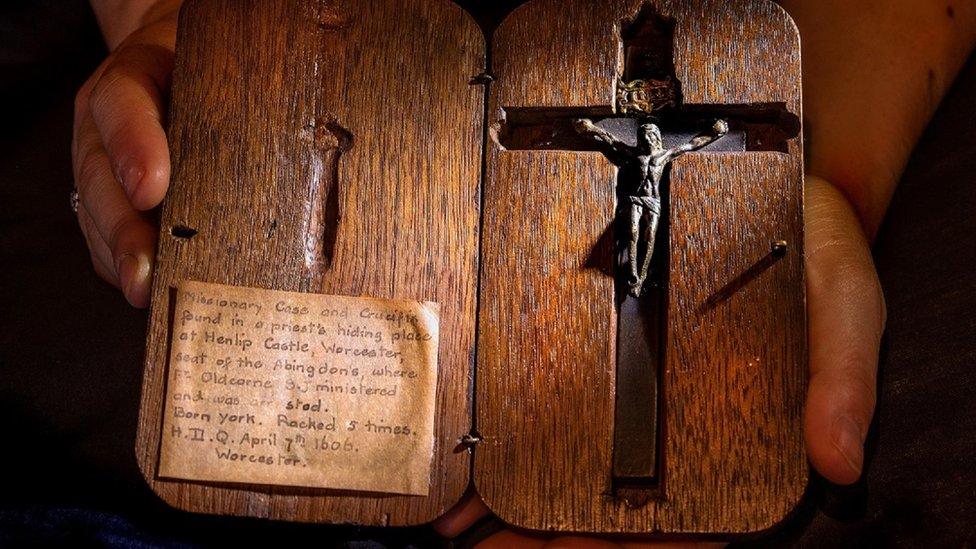
The label on the cross said Father Oldcorne was born in York and died in Worcester on 7 April 1606
A new exhibition about the aftermath of the plot opens at the centre on Saturday.
Catholic priests were forced into hiding and Oldcorne concealed himself in a hole in a chimney breast at Hindlip Hall in Worcester.
He was captured along with his servant Ralph Ashley, Father Henry Garnet and lay-brother Nicholas Owen.
All were killed, but Father Henry Garnet was the only one to have any knowledge of the Gunpowder Plot, which he firmly opposed, according to researchers.
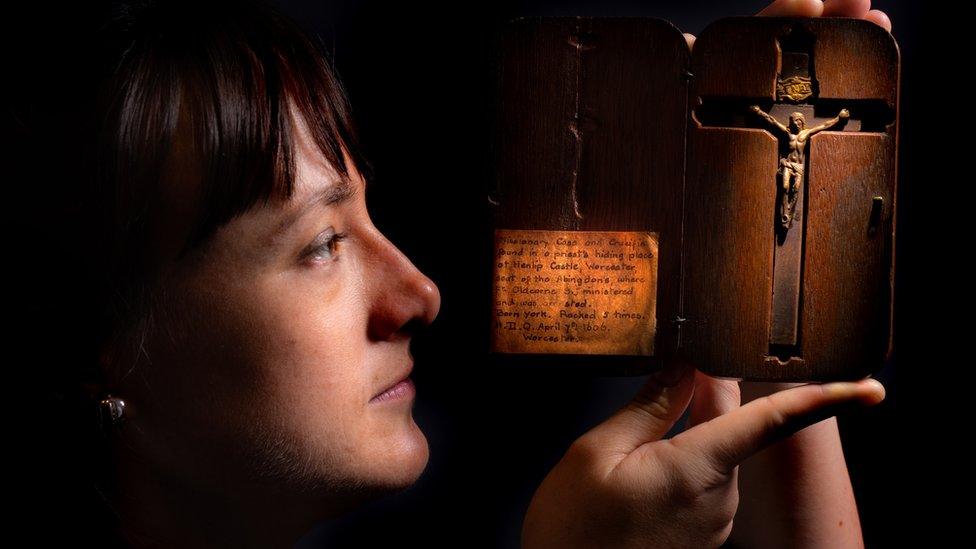
The crucifix is believed to be the only item to survive raids on Catholic homes after the Gunpowder Plot
Dr Hannah Thomas, special collections manager, said that after expert research "we are now confident in believing that this is the only item surviving from the raids following the Gunpowder Plot".
"In the aftermath of the plot, Catholic houses were raided across the country and priests went into hiding; hide-and-seek became a matter of life or death," she said.
The exhibition, which runs until 16 November, includes research about how priest's hiding holes were constructed within the fabric of buildings.
It also features information on how Catholics secretly practised their faith using disguises, codes, invisible ink, and Catholic items concealed to look like everyday objects.

Follow BBC Yorkshire on Facebook, external, X (formerly Twitter), external and Instagram, external. Send your story ideas to yorkslincs.news@bbc.co.uk, external.
Related topics
- Published6 July 2013
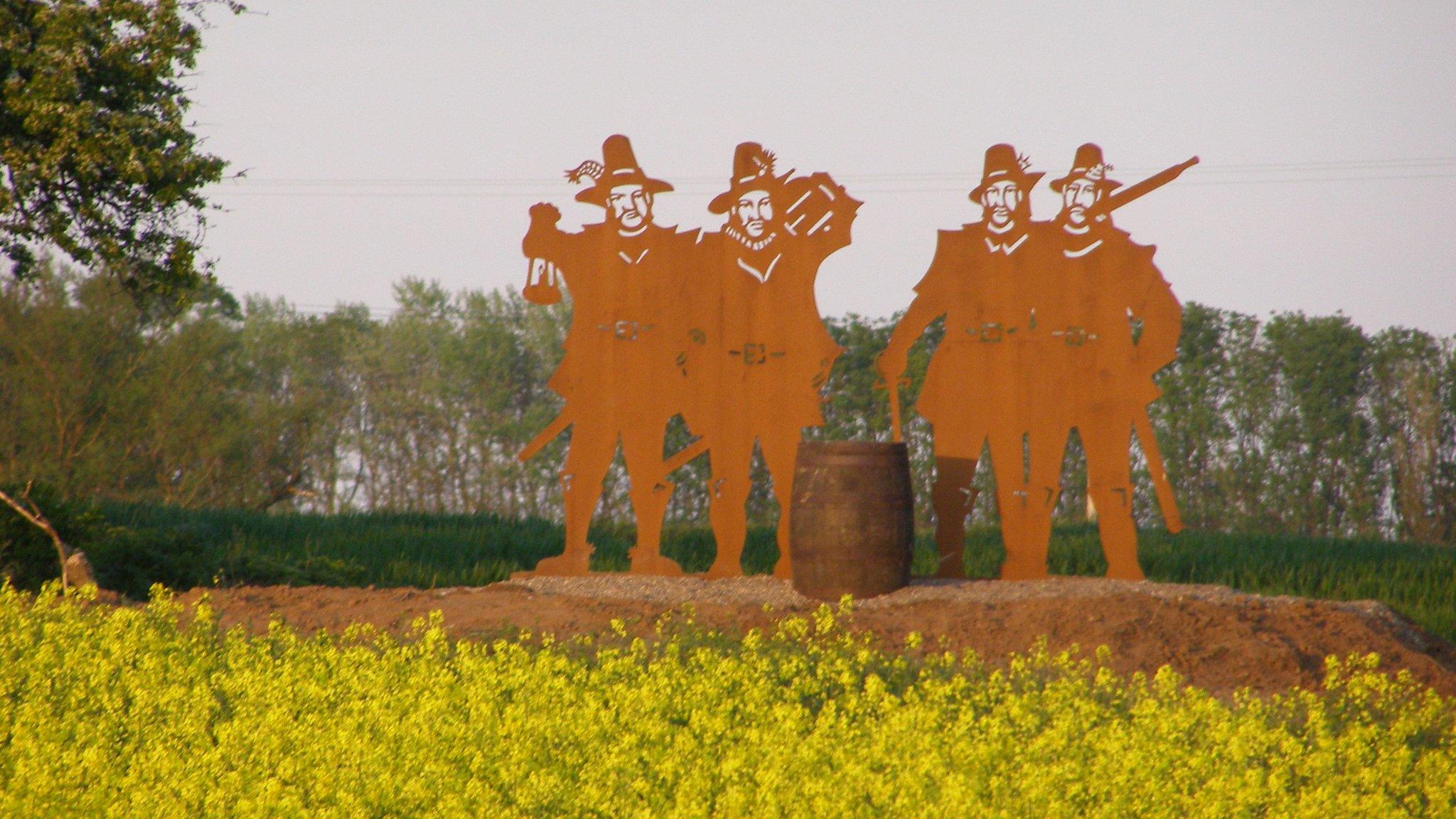
- Published1 November 2018
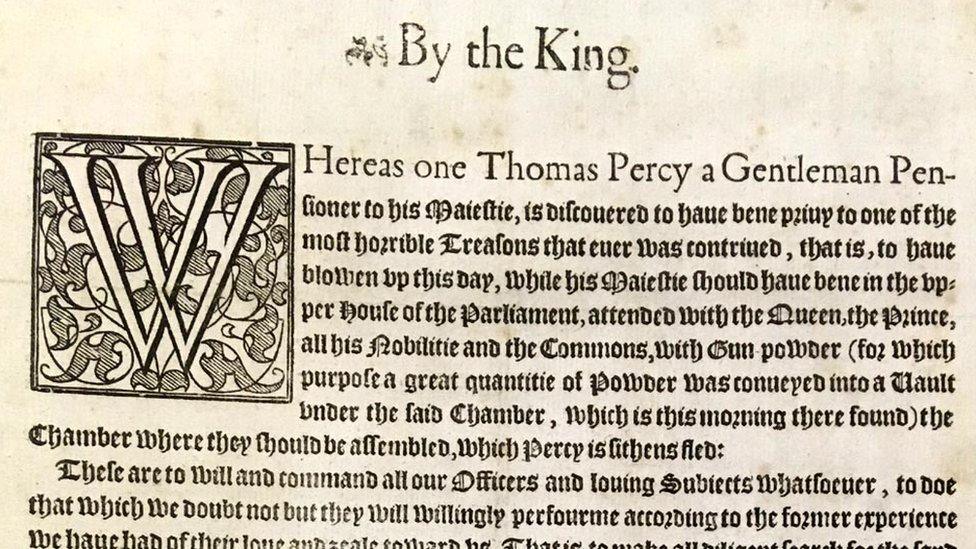
- Published13 September 2023
